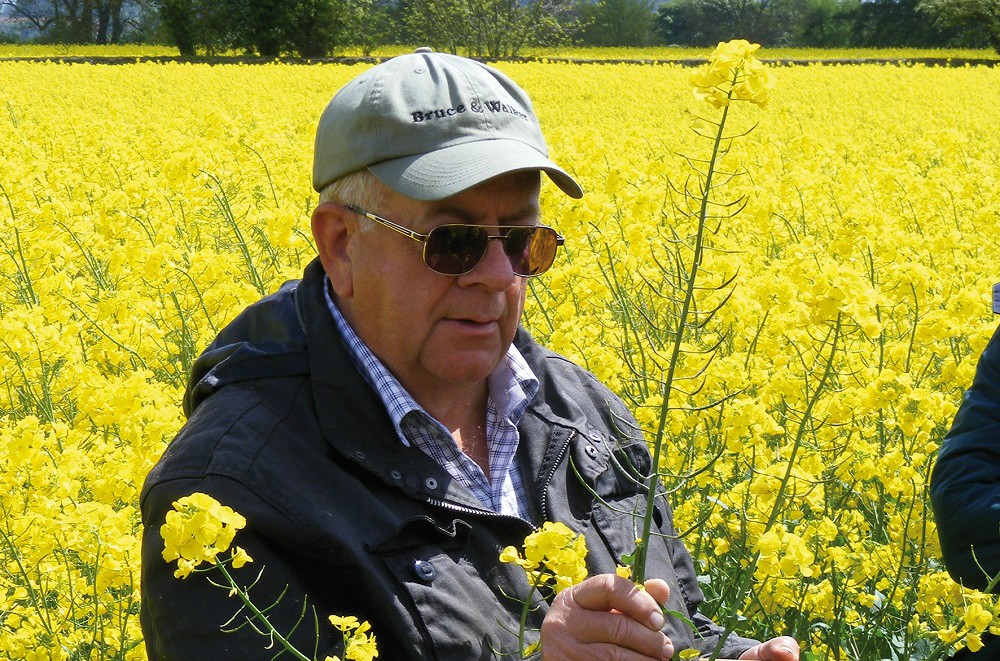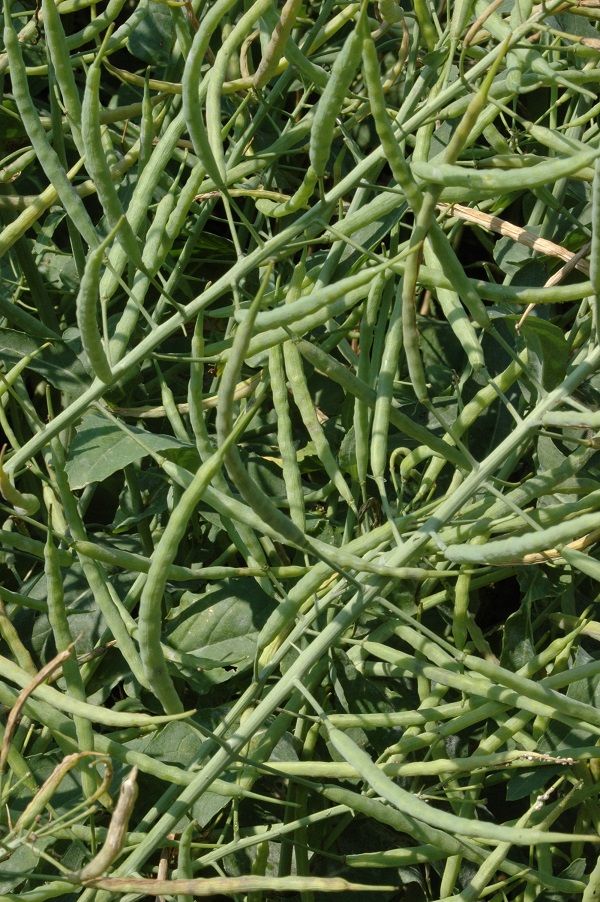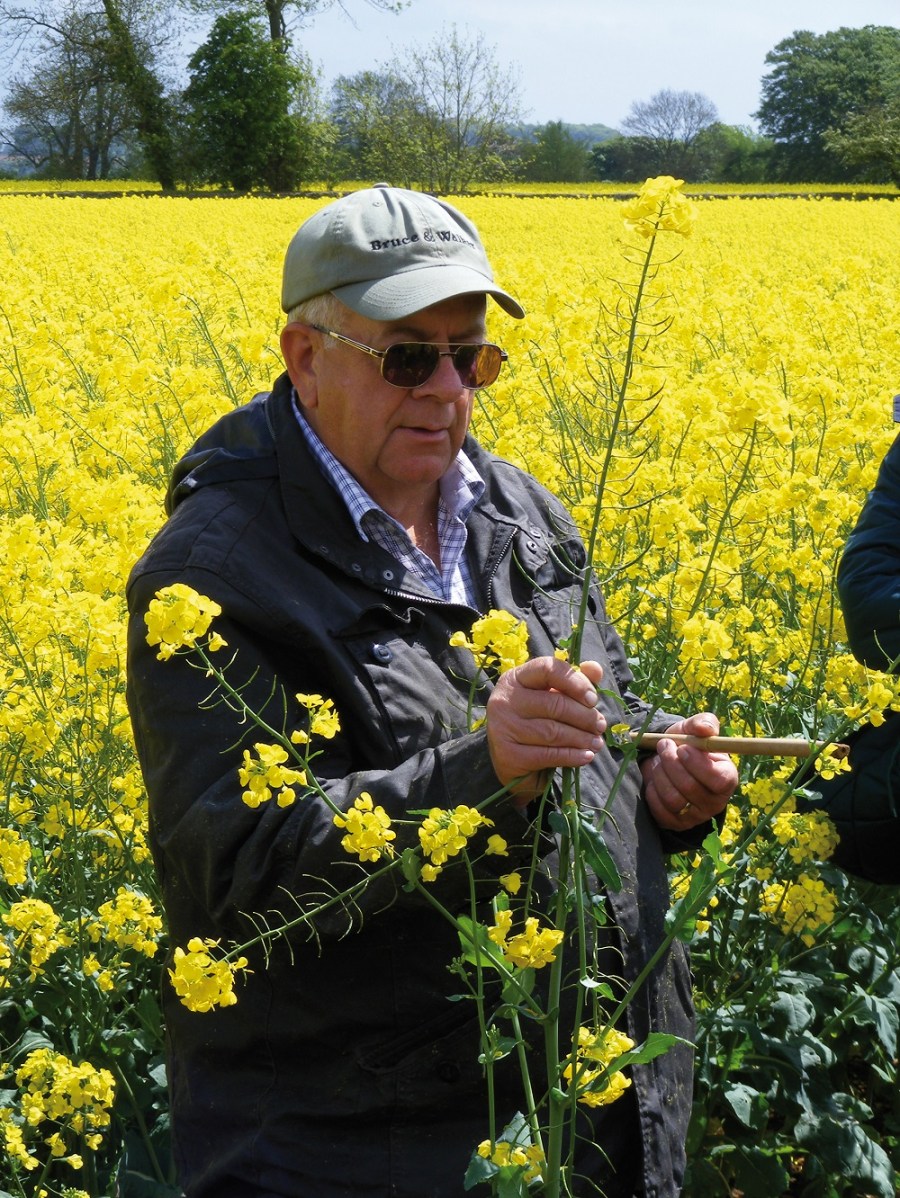
Born and bred in the UK, the latest oilseed rape varieties from DLF, Elevation and Broadway, sit bang at the top of the Northern Recommended List and should turn a lot of heads. CPM finds out more.
These are British bred varieties for British situations and farmers.
By Melanie Jenkins
Bred and developed by the UK’s only independent oilseed rape breeder, Elevation and Broadway have a unique tale in how they came about. Mike Pickford has been breeding OSR for 45 years and after independently developing 16 OSR varieties, he hit the jackpot and got two on the AHDB Recommend List in one year.
Both conventional varieties, they demonstrate high yields and good light leaf spot resistance that growers will find attractive, says Clive Sutton at DLF, who market Mike’s varieties. “Both offer consistency and reliability and are on the RL for the North region. However, they’ve also shown they’re consistent and suitable for across the UK. Elevation has done particularly well in the East/West region.”

One of the biggest attractions of both Elevation and Broadway is their characteristic big pods and seeds.
Lee Bennett at Openfield has been watching Elevation and Broadway since before National List testing and could see very early on the yield potential in both. “Up until last year, Broadway was yielding ahead of Elevation but Elevation just pipped it at the last post.”
Elevation also has a good oil content, making the gross output strong, says Clive. “Last year it was the highest yielding variety in all trials for harvest 2017 and is the leading variety in the North region. Broadway is within a hair’s breadth of Elevation yield-wise but is more suited to the North than the South.”
Simon Kightley at NIAB notes that both varieties are highly suited to the North region. “From N Yorks into Scotland, both are equally top yielding and have decent levels of LLS resistance, which is important.
“When we turn our attention to the East/West region, there’s scarcely a statistical difference between Elevation and the best recommended varieties,” he explains. “However, both Elevation and Broadway were also primarily tested in the North, so there’s a shortage of data for their performance in the South, so I hope to see a fuller picture of their performance in the coming harvest year.”
Elevation is a short to medium height variety with a lower biomass, explains Clive. “Management is eased by this and it has good robust standing ability, with stiff straw, but is open branched architecturally. This allows a lot of light down through the depths of the canopy to enable the pods to fill with seeds by increasing photosynthesis. Later in the season this is important as achieving a high pod fill will contribute towards yield.”
One of the biggest attractions of both varieties is their characteristic big pods and seeds. Mike selected Elevation as an F3 plant as it stood out due to its high number of pods and high yield per pod. “I selected it based on component counting, with output as the main objective and it has yielded over 7t/ha on one Suffolk farm, averaging 35-45 seeds per pod. Variations in crops are genetic and environmental and you have to start with good genetics.”
Sowing should be targeted for mid Aug into early Sept for Elevation but there’s flexibility to establish it earlier if needed, says Clive. “It has a prostrate growth habit early in the season but does pick up strongly in the spring period, demonstrating good vigour.”
Broadway is completely different, says Mike. “It’s a good all-rounder that’s more erect and vigorous and will just get up and away. It’s better looking than Elevation in the autumn.”
Broadway will readily regenerate in the spring, says Lee. “This should be particularly noticeable this year as most OSR crops are generally a long way behind and if the crops aren’t developing at their normal rate, flea beetle larvae can overcome some plants. I looked at my plots on 12 Mar and I thought Broadway looked like a hybrid as it had really good get up and go.”
Although Elevation has a different growth habit it’s still fantastic in the autumn, adds Lee. “However, it’s slightly more considered than Broadway in the spring. There’s lots of OSR out there at the moment trying to extend with no foliar canopy in place but Elevation is building its biomass before getting on with the stressful phase of flowering, which can only be a good thing.”
Elevation fits into the medium timing bracket for flowering, which is useful in the North as it’ll be less prone to damaging late frosts, explains Clive. “With a medium maturity this allows a full maturation period leading to full pod fill and bold seed size. Broadway is a little earlier to flower and slightly later to mature, making it most suited to northern locations.”
Both varieties have good standing ability, lodging and stem stiffness, says Simon. “At maturity, Elevation is slightly shorter but this isn’t much of an issue. Broadway is slightly earlier flowering, but this gives a longer pod fill period, allowing more leeway for difficult conditions.”
With reasonable to good overall disease resistance, Elevation meets the standard requirements for both light leaf spot and phoma stem canker, says Clive. “Interestingly in untreated trials it’s showing exceptional yields, even where LLS pressure is high. However, we still recommend crops receive a full fungicide programme. The tolerance to disease will afford more flexibility with fungicide spray timing under adverse conditions.”
For Lee, the biggest appeal has been the LLS resistance, especially with Broadway. “I looked at Broadway very early on and immediately made my interest known because LLS is such a big national problem now.”
Farmers have returned to conventional varieties over hybrids in the South because of cabbage stem flea beetle, says Simon. “We have to note that both varieties are susceptible to stem canker, but so are plenty of other varieties that have done well over the years. Both are susceptible but it doesn’t seem to have impacted yield performance in a fungicide treated programme, and growers can get good control of phoma with autumn fungicides.”
Both varieties appear to show very strong resistance to verticillium wilt infections on the stem later in the spring, notes Clive. “The light penetration through the architecture of the plants is helping in the later stages.”
Seed availability this year is very good for Elevation with a wide distribution accessible and option on carry over seed for early delivery, says Clive. “Broadway seed will be available from this year’s seed crop.”
Lee has had more experience with Elevation commercially, with one grower high up in the Yorks Wolds relaying it as one of the most vigorous varieties they’ve grown, achieving over 5t/ha. “I’ve no qualms about recommending it across the UK.” He also suggests farmers get out to trial plots to view it. “There’s no substitute for getting out in trials to see how these crops behave in comparison to each other, and my comfort around Elevation and Broadway came from this.”
Lee has a minor concern that the DLF brand will be not as familiar to OSR growers as some of the more recognised companies. “It would be a crying shame if this limits the market penetration of these varieties. I would urge growers to look past the allure of the glossy marketing as what you’re really buying is performance and genetics, not an advert. I spend a lot of time analysing and selecting the varieties I want and always choose what I perceive to be the best, and I’ve no qualms about these two.”
Elevation should have a very broad appeal, being conventional and showing a strong untreated performance, says Clive. “There shouldn’t be any issues achieving its genetic potential.” He also reckons Broadway should take a reasonable slice of the market, certainly in the North. “It has the gross output without compromising on agronomics and standing power. These are British bred varieties for British situations and farmers.”
Mike is already working away at an Elevation mark 2 which he has in trials at present, and is looking into CSFB resistance and virus resistance for the future.
Good results from a low input crop
Phil and Tim Hart farm just over 400ha at Elm Farm, Lutton, on the Northants/Cambs border and first grew a small 1.6ha plot of Elevation for harvest 2017. It was suggested to Phil by Anglia Grain and after growing it successfully they used some saved seed to plant 60ha last autumn.
“It was drilled in the second week of Aug, some of which was sub-soiled in and the rest was undressed seed blown in to the standing wheat crop with an increased seed rate the day before combining,” Phil explains. “At harvest the straw was chopped and left on top – this has worked extremely well as it does most years and marks a saving with time and input costs.”
The sub-soiled plot was sprayed with glyphosate before it was drilled but the blown seed had nothing as the previous winter wheats were fairly clean. Each had an insecticide spray on 24 Sept, Centurion Max (clethodim) on 27 Sept and Kerb (propyzamide) on 5 Dec but they had no spring applications as of mid-April.
It received a 200 kg/ha 10-15-20 + 20SO3 straight after drilling, then 200 kg/ha 27N/34SO3 mid March followed by 200 kg/ha 34.5N in early April and a late dressing will follow.
Flea beetle, pigeons and slugs caused severe damage to some of their OSR crops, and they lost some of their acreage, but still have around 40ha left in the ground.
Based on last year’s small crop of Elevation, Phil is looking forward to this year’s results. “The oil content was good, the thousand grain weight was the highest I’ve seen and we were pleased with the yield. If it produces oil like it did last year we’ll continue to grow it. We never really get more than 3.7t/ha, so if it averages above that, we’ll be happy.”
Quick out of the blocks in Northants
Alex Townroe farms 186ha at Westfield House Farm, Warsop, Notts and currently has Broadway in the ground for the first time on a recommendation from Openfield.
He’s growing about 17ha, which was drilled at 4kg/ha on the 2017 Aug bank holiday behind a crop of winter barley. “It was disced and glyphosated off and then had 8t/ha of chicken muck before being direct drilled with a Simba Solo and Cambridge rolled,” he says.
The crop has had a full chemical programme with 300kg/ha of 27N/9SO3 on 14 Mar and a further 350kg/ha dressing on 9 Apr. “I was two weeks later with the first application of fertiliser than I would have liked,” explains Alex.
“It grew like mad in the autumn. It got up and away and never looked back. I don’t know if this was because I drilled into moisture and rolled or if it was the muck, but it established very quickly and well.”
The crop had a bit of pigeon damage but mostly kept them away as it established so quickly – and it didn’t suffer as much flea beetle damage as the other variety Alex grew. “It has wintered well with very little disease and if it yields well I’ll grow it again. We average 3.7t/ha so it would be nice to get a little more than that.”
Elevation and Broadway at a glance





